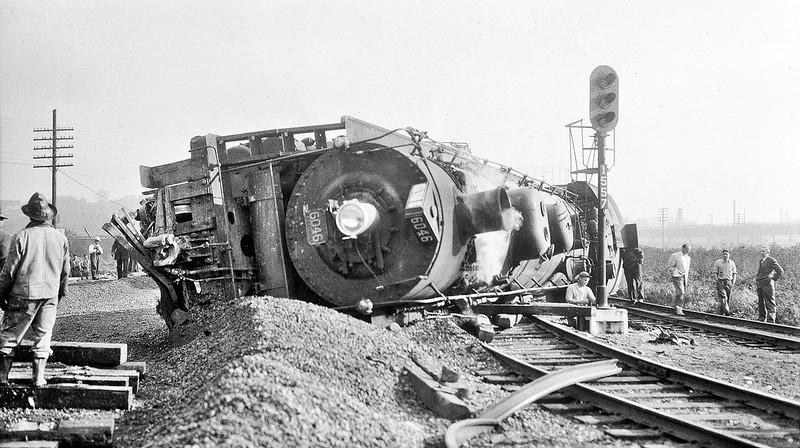Archive for the ‘Seeing Things As They Are’ Category
Bringing Your Whole Self To The Party
 If it’s taken from you, you’ll have a problem if you think it was yours.
If it’s taken from you, you’ll have a problem if you think it was yours.
When it’s taken from you, it doesn’t matter if it was never yours.
No one can take anything from you unless you think it is yours.
There can be no loss if it was never yours to have.
You can be manipulated if they know you have a problem letting go.
Said differently, if you can let go you can’t be manipulated.
Whether you want to admit it or not, it all goes away.
But if you see your favorite mug as already broken, there’s no problem when it breaks.
If you recognize your thirties will end, you won’t feel slighted when you start your fourth decade.
And it’s the same when you start your your fifth.
When you know things will end, their ending comes easier.
When you’re aware it will end, you can do it your way.
When you’re aware it’s finite, it’s easier to do what you think is right.
When you’re it all goes away, you can better appreciate what you have.
When you’re aware everything has a half-life, you’re less likely to live your life as a half-person.
Wouldn’t you like to do things your way?
Wouldn’t you like to do what you think is right?
Wouldn’t you like to live as a whole person?
Wouldn’t you like to appreciate what you have?
Would’t you like to bring your whole self to the party?
If so, why not embrace the impermanence?
Image credit — 正面顔〜〜〜(- .. -)
Improvement In Reverse Sequence
 Before you can make improvements, you must identify improvement opportunities.
Before you can make improvements, you must identify improvement opportunities.
Before you can identify improvement opportunities, you must look for them.
Before you can look for improvement opportunities, you must believe improvement is possible.
Before believing improvement is possible, you must admit there’s a need for improvement.
Before you can admit the need for improvement, you must recognize the need for improvement.
Before you can recognize the need for improvement, you must feel dissatisfied with how things are.
Before you can feel dissatisfied with how things are, you must compare how things are for you relative to how things are for others (e.g., competitors, coworkers).
Before you can compare things for yourself relative to others, you must be aware of how things are for others and how they are for you.
Before you can be aware of how things are, you must be calm, curious, and mindful.
Before you can be calm, curious, and mindful, you must be well-rested and well-fed. And you must feel safe.
What choices do you make to be well-rested? How do you feel about that?
What choices do you make to be well-fed? How do you feel about that?
What choices do you make to feel safe? How do you feel about that?
Image credit — Philip McErlean
It’s not about failing fast; it’s about learning fast.

No one has ever been promoted by failing fast. They may have been promoted because they learned something important from an experiment that delivered unexpected results, but that’s fundamentally different than failure. That’s learning.
Failure, as a word, has the strongest negative connotations. Close your eyes and imagine a failure. Can you imagine a scenario where someone gets praised or promoted for that failure? I think not. It’s bad when you fail to qualify for a race. It’s bad when you fail to get that new job. It’s bad when driving down the highway the transmission fails fast. If you squint, sometimes you can see a twinkle of goodness in failure, but it’s still more than 99% bad.
When it’s bad for people’s careers, they don’t do it. Failure is like that. If you want to motivate people or instill a new behavior, I suggest you choose a word other than failure.
Learning, as a word, has highly positive connotations. Children go to school to learn, and that’s good. People go to college to learn, and that’s good. When people learn new things they can do new things, and that’s good. Learning is the foundation for growth and development, and that’s good.
Learning can look like failure to the untrained eye. The prototype blew up – FAILURE. We thought the prototype would survive the test, but it didn’t. We ran a good test, learned the weakest element, and we’re improving it now – LEARNING. In both cases, the prototype is a complete wreck, but in the FAILURE scenario, the team is afraid to talk about it, and in the LEARNING scenario they brag. In the LEARNING scenario, each team member stands two inches taller.
Learning yes; failure no.
The transition from failure to learning starts with a question: What did you learn? It’s a magic question that helps the team see the progress instead of the shattered remains. It helps them see that their hard work has made them smarter. After several what-did-you-learns, the team will start to see what they learned. Without your prompts, they’ll know what they learned. Then, they’ll design their work around their desired learning. Then they’ll define formal learning objectives (LOs). Then they’ll figure out how to improve their learning rate. And then they’re off to the races.
You don’t break things for the sake of breaking them. You break things so you can learn.
Learning yes; failure no. Because language matters.
Image credit — mining camper
Wanting What You Have
 If you got what you wanted, what would you do?
If you got what you wanted, what would you do?
Would you be happy or would you want something else?
Wanting doesn’t have a half-life. Regardless of how much we have, wanting is always right there with us lurking in the background.
Getting what you want has a half-life. After you get what you want, your happiness decays until what you just got becomes what you always had. I think they call that hedonistic adaptation.
When you have what you always had, you have two options. You can want more or you can want what you have. Which will you choose?
When you get what you want, you become afraid to lose what you got. There’s no free lunch with getting what you want.
When you want more, I can manipulate you. I wouldn’t do that, but I could.
When you want more your mind lives in the future where it tries to get what you want. And lives in the past where it mourns what you did not get or lost.
It’s easier to live in the present moment when you want what you have. There’s no need to craft a plan to get more and no need to lament what you didn’t have.
You can tell when a person wants what they have. They are kind because there’s no need to be otherwise. They are calm because things are good. And they are themselves because they don’t need anything from anyone.
Wanting what you have is straightforward. Whatever you have, you decide that’s what you want. It’s much different than having what you want. Once you have what you want hedonistic adaptation makes you want more, and then it’s time to jump back on the hamster wheel.
Wanting what you have is freeing. Why not choose to be free and choose to want what you have?
Image credit — Steven Guzzardi
How To Put Yourself Out There
 When in doubt, put it out there. Easy to say, difficult to do.
When in doubt, put it out there. Easy to say, difficult to do.
Why not give it a go? What’s in the way? A better question: Who is in the way? I bet that who is you.
I’ve heard the fear of failure blocks people from running full tilt into new territory. Maybe. But I think the fear of success is the likely culprit.
If you go like hell and it doesn’t work, the consequences of failure are clear, immediate, and short-lived. It’s like skinning your knee. Everyone knows you went down hard and it hurts in the moment. And two days after the Band-Aid, you’re better.
If you run into the fire and succeed, the consequences are unknown, and there’s no telling when those consequences will find you. Will you be seen as an imposter? Will soar to new heights only to fail catastrophically and publicly? Will the hammer drop after this success or the next one? There’s uncertainty at every turn and our internal systems don’t like that.
Whether it’s the fear of success or failure, I think the root cause is the same: our aversion to being judged by others. We tell ourselves stories about what people will think about us if we fail and if we succeed. In both cases, our internal stories scratch at our self-image and make our souls bleed. And all this before any failure or success.
I think it’s impossible to stop altogether our inner stories. But, I think it is possible to change our response to our inner stories. You can’t stop someone from calling you a dog. But when they call a dog, you can turn around and look to see if you have a tail. And if you don’t have a tail, you can tell yourself objectively you’re not a dog. And I think that’s a good way to dismiss our internal stories.
The next time you have an opportunity put yourself out there, listen to the stories you tell yourself. Acknowledge they’re real and acknowledge they’re not true. They may call you a dog, but you have no tail. So, no, you’re not a dog.
You may fail or you may fail. But the only way to find out is to put yourself out there. Whether you fail or succeed, you don’t have a tail and you’re not a dog. So you might as well put yourself out there.
Image credit — Tambako the Jaguar
There’s no such thing as 100% disagreement.
 Even when there is significant disagreement, there is not 100% disagreement.
Even when there is significant disagreement, there is not 100% disagreement.
Can both sides agree breathing is good for our health? I think so. And if so, there is less than 100% disagreement. Now that we know agreement is possible, might we stand together on this small agreement platform and build on it?
Can both sides agree all people are important? Maybe not. But what if we break it down into smaller chunks? Can we agree family is important? Maybe. Can we agree my family is important to me and your family is important to you? I think so. Now that we have some agreement, won’t other discussions be easier?
Can we agree we want the best for our families? I think so. And even though we don’t agree on what’s best for our families, we still agree we want the best for them. What if we focused on our agreement at the expense of our disagreement? Down the road, might this make it easier to talk to each other about what we want for our families? Wouldn’t we see each other differently?
But might we agree on some things we want for our families? Do both sides agree we want our families to be healthy? Do we agree we want them to be happy? Do we agree we want them to be well-fed? Do we want them to be warm and dry when the weather isn’t? With all this agreement, might we be on the same side, at least in this space?
But what about our country? Is there 100% disagreement here? I think not. Do we agree we want to be safe? Do we agree we want the people we care about to be safe? Do we agree we want good roads? Good bridges? Do we agree we want to earn a good living and provide for our families? It seems to me we agree on some important things about our country. And I think if we acknowledge our agreement, we can build on it.
I think there’s no such thing as 100% disagreement. I think you and I agree on far more things than we realize. When we meet, I will look for small nuggets of agreement. And when I find one, I will acknowledge our agreement. And I hope you will feel understood. And I hope that helps us grow our agreement into a friendship built on mutual respect. And I hope we can teach our friends to seek agreement and build on it.
I think this could be helpful for all of us. Do you agree?
Image credit — Orin Zebest
Swimming In New Soup
 You know the space is new when you don’t have the right words to describe the phenomenon.
You know the space is new when you don’t have the right words to describe the phenomenon.
When there are two opposite sequences of events and you think both are right, you know the space is new.
You know you’re thinking about new things when the harder you try to figure it out the less you know.
You know the space is outside your experience but within your knowledge when you know what to do but you don’t know why.
When you can see the concept in your head but can’t drag it to the whiteboard, you’re swimming in new soup.
When you come back from a walk with a solution to a problem you haven’t yet met, you’re circling new space.
And it’s the same when know what should be but it isn’t – circling new space.
When your old tricks are irrelevant, you’re digging in a new sandbox.
When you come up with a new trick but the audience doesn’t care – new space.
When you know how an experiment will turn out and it turns out you ran an irrational experiment – new space.
When everyone disagrees, the disagreement is a surrogate for the new space.
It’s vital to recognize when you’re swimming in a new space. There is design freedom, new solutions to new problems, growth potential, learning, and excitement. There’s acknowledgment that the old ways won’t cut it. There’s permission to try.
And it’s vital to recognize when you’re squatting in an old space because there’s an acknowledgment that the old ways haven’t cut it. And there’s permission to wander toward a new space.
Image credit — Tambaco The Jaguar
When in doubt, start.
 At the start, it’s impossible to know the right thing to do, other than the right thing is to start.
At the start, it’s impossible to know the right thing to do, other than the right thing is to start.
If you think you should have started, but have not, the only thing in the way is you.
If you want to start, get out of your own way, and start.
And even if you’re not in the way, there’s no harm in declaring you ARE in the way and starting.
If you’re afraid, be afraid. And start.
If you’re not afraid, don’t be afraid. And start.
If you can’t choose among the options, all options are equally good. Choose one, and start.
If you’re worried the first thing won’t work, stop worrying, start starting, and find out.
Before starting, you don’t have to know the second thing to do. You only have to choose the first thing to do.
The first thing you do will not be perfect, but that’s the only path to the second thing that’s a little less not perfect.
The second thing is defined by the outcome of the first. Start the first to inform the second.
If you don’t have the bandwidth to start a good project, stop a bad one. Then, start.
If you stop more you can start more.
Starting small is a great way to start. And if you can’t do that, start smaller.
If you don’t start, you can never finish. That’s why starting is so important.
In the end, starting starts with starting. This is The Way.
Image credit — Claudio Marinangeli
Universal Truths
 When things don’t go as planned, recognize the Universe doesn’t care about your plan.
When things don’t go as planned, recognize the Universe doesn’t care about your plan.
When the going gets tough, the Universe is telling you something. You just don’t know what it’s telling you.
When in doubt, do the next right thing. That’s how the Universe rolls.
If you don’t like how it’s going, change your situation or change your expectations. Those are the two options sanctioned by the Universe.
If something bad happens, don’t take it personally. The Universe doesn’t know your name.
If you catch yourself taking your plan seriously, don’t. The Universe frowns on seriousness.
Don’t spend time creating a grand plan. The Universe isn’t big on grand plans.
If your plan requires the tide to stay away, make a different one. The Universe never forgets to tell the tide to come in.
If you find yourself chasing the Idealized Future State, stop. The Universe has disdain for the ideal.
If something good happens, don’t take it personally. The Universe doesn’t know your name.
When you don’t know the answer, that’s the Universe telling you you may be onto something.
When you have all the right answers, that’s the Universe telling you you’re not asking the right questions.
Image credit — Giuseppe Donatiello
The Frustration Equation
 For right frustration to emerge, you need an accurate understanding of how things are, a desire for them to be different, and a recognition you can’t remedy the situation.
For right frustration to emerge, you need an accurate understanding of how things are, a desire for them to be different, and a recognition you can’t remedy the situation.
The emergence of your desire for things to be different starts with knowing how things are. And to see things as they are, you’ve got to be in the right condition – well-rested, unstressed, and sitting in the present moment. When you’re tired, stressed, or sitting in the past or future you can’t pay attention. And when you don’t pay attention, you miss details or context and see something that isn’t. Or, if you’re tired or stressed you can have clear eyes and a muddy interpretation. Either way, you’re off to a bad start because your desire for things to be different is wrongly informed. Sure, your misunderstanding can lead to a desire for things to be different, but your desire is founded on the wrong understanding. If you want your frustration to be right frustration, seeing things as they are is the foundational step. But it’s not yet a desire for things to be different.
Your desire for things to be different is a subtraction of sorts – when how things are minus how you want them to be equals something other than zero. (See Eq. 1) Your brain-body uses that delta to create a desire for things to be different. If how things are is equal to how you want them to be, the difference is zero (no delta) and there is no forcing function for your desire. In that way, if you always want things to be as they are, there can be no desire for difference and frustration cannot emerge. But frustration can emerge if you know how you want things to be and you recognize they’re not that way.
Eq. 1 Forcing Function for Desire (FFD) = (how things are) – (how you want them to be)
There is a more complete variant of the above equation where FFD is non-zero (there’s a difference between how things are and how you want them) yet frustration cannot emerge. It’s called the “I don’t care enough” variant. (See Eq. 2) With this variant, you recognize how things are, you know how you want them to be, but you don’t care enough to be frustrated.
Eq. 2 FFD = [(how things are) – (how you want them to be)] * (Care Factor)
When you don’t care, your Care Factor (CF) = 0. And when the non-zero delta is multiplied by a CF of zero, FFD is zero. This means there is no forcing function for desire and frustration cannot emerge. But this is not a good place to be. Sure, frustration cannot emerge, but when you don’t care there is no forcing function for change. Yes, you see things aren’t as you want, but you go along for the ride and don’t do anything about it. I think that’s sad. And I think that’s bad for business. I’d rather have frustration.
Eq. 2 can be used by Human Resources as an Occom’s Razor of sorts. If someone is frustrated, their CF is non-zero and they care.
Now the third factor required for frustration to emerge – a recognition you can’t do anything about the mismatch between how things are and how you want them. If you don’t recognize you can’t do anything to equalize how things are and how you want them, there can be no frustration. Think – ignorance is bliss. If you think you can do something to make how things are the same as how you want them, there is no frustration. Because it’s important to you (CF is non-zero), you will devote energy to bringing the two sides together and there will be no frustration. But when there’s a mismatch between how things are and how you want them, you care about making that mismatch go away, and you recognize you can’t do anything to eliminate the mismatch, frustration emerges.
What does all this say about people who display frustration? Do you want people that know how to see things as they are? Do you want people who can imagine how things can be different? Do you want people who understand the difference between what they can change and what they cannot? Do you want people who care enough to be frustrated?
Image credit — Atilla Kefeli
The Importance of Moving From Telling to Asking
 Tell me what you want done, but don’t tell me how. You’ve got to leave something for me.
Tell me what you want done, but don’t tell me how. You’ve got to leave something for me.
Better yet, ask me to help you with a problem and let me solve it. I prefer asking over telling.
Better still, explain the situation and ask me what I think. We can then discuss why I see it the way I do and we can create an approach.
Even better, ask me to assess the situation and create a proposal.
Better still, ask me to assess the situation, create a project plan, and run the project.
If you come up with a solution but no definition of the problem, I will ask you to define the problem.
If you come up with a solution and a definition of the problem, I will ask you to explain why it’s the right solution.
If you come up with a problem, a solution, and an analysis that justifies the solution, I will ask why you need me.
If you know what you want to do, don’t withhold information and make me guess.
If you know what you want to do, ask me to help and I will help you with your plan.
If you know what you want to do and want to improve your plan, ask me how to make your plan better.
If you want your plan to become our plan, bring me in from the start and ask me what I think we should do.
Image credit — x1klima
 Mike Shipulski
Mike Shipulski